Miscellaneous Stuff
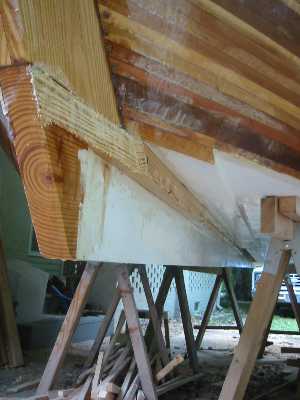
The plans call for a cleat to support the skeg. I went ahead and installed it on both sides. The tail end is my interpretation of the plans, not necessarily the correct ones but I think it will work ok.
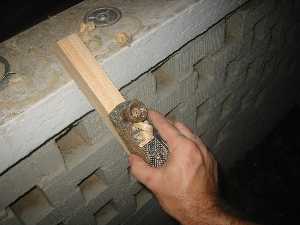
This piece I'm planing will be a yard. It's part of a so called "sprit rig" as described in Skiffs and Schooners by R. D. "Pete" Culler. This is a simple, economical, easy to operate rig that doesn't require much expensive hardare. It operates quite differently from what one normally encounters today. I'll be talking much more about my constructon of this rig in the near future.
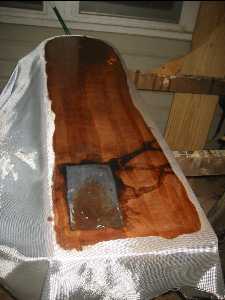
Here I'm fiberglassing the centerboard. The lead weight is about equal in mass to the rest of the centerboard so it is peculiar to handle. Once I had it propped up on edge and it slipped unexpectantly, did a do-si-do on the way down, and break danced on the ground and on top of what ever else it fell on. Fortunately not much damage. I patched up the scrapes as I finished glassing it.
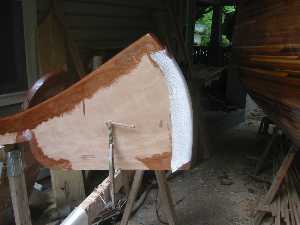
Glassing the rudder is a bit more tricky. I was able to conform cloth to the corners and edges.
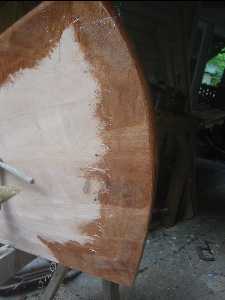
Then I painted epoxy on to wet it out. It held in place until it dried even when vertical.
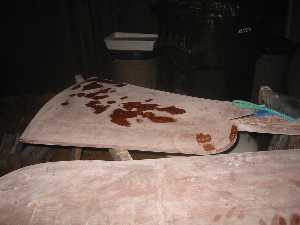
I finished by laying it flat and applying cloth to the side and wetting it out.
At one point I ran into a bit of a problem with the epoxy bubbling. I scraped them off and sanded them, then applied more epoxy. The reason was I had left it in direct sunlight on a day when the temperature reached 90. The lesson learned is don't do this.
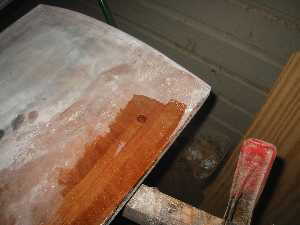
The centerboard is ready for the white BLP Industrial epoxy. I put two layers of fiberglass cloth in the way of the lead weight since the first layer doesn't stick to the lead as well as it does the wood. I wanted extra strength here to resist possible scratches.
To attach the pennant to the centerboard for raising and lowering, I drilled a hole. I will pass a 1/4" line through and tie a knot. I could have obtained a bronze eyebolt but the hole is very simple and is what appears to be on the plans. If the pennant rots I will replace it in about 5 min. Since the boat will be dry sailed it should never be a problem.
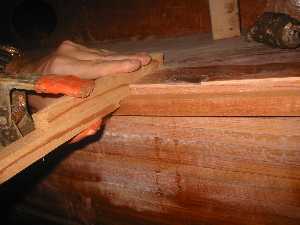
An important piece is the rubrail. It adds character to the boat and provides some protection to the topsides when docking or rafting up. Here I'm using a homemade guage to evenly space it below the deck.
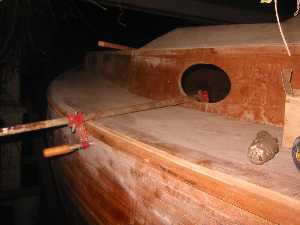
This being a one very long piece I held it in place temporary with this...
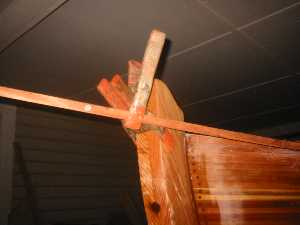
... and this.
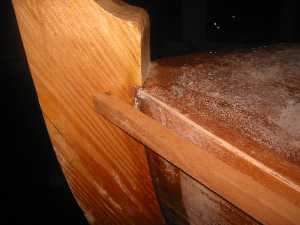
I cut a bevel in the front and lined it up. Then I worked aft, countersinking screws every foot along the shear and one at the very end.
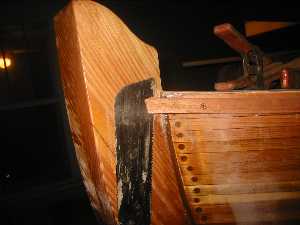
I eyeballed the bevel for an initial cut. Afterward I tightened the screw until the bevel touched. Then I successively sawed a layer off and tightened the screw until the rubrail made contact along the entire surface.
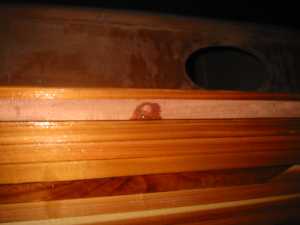
I made up a bunch of bungs and set them in epoxy.